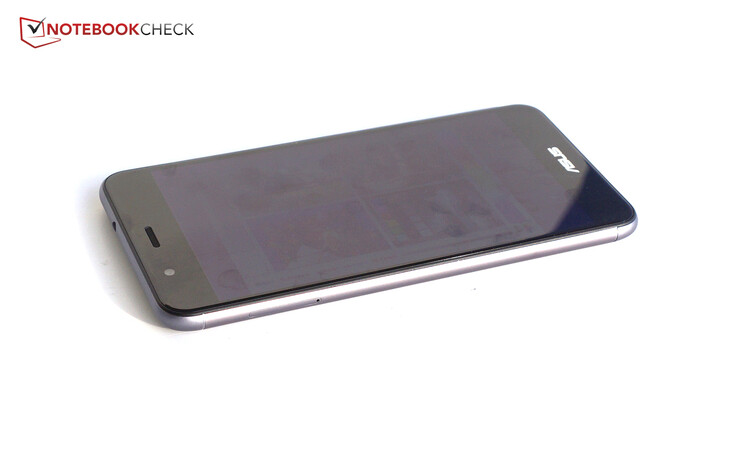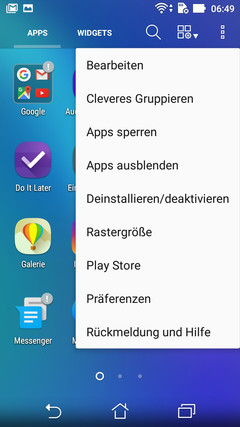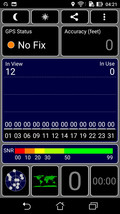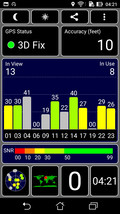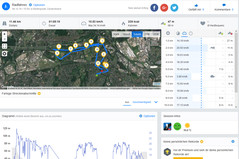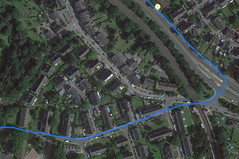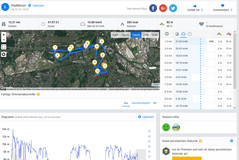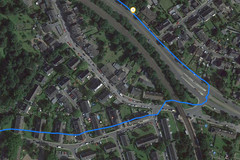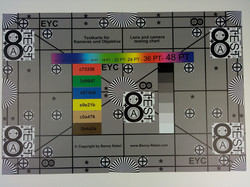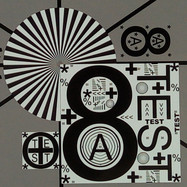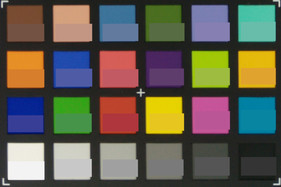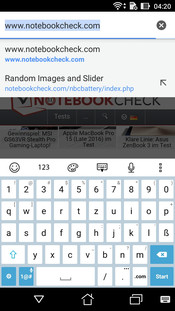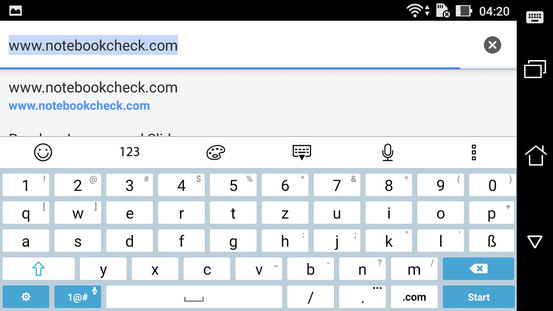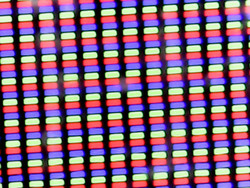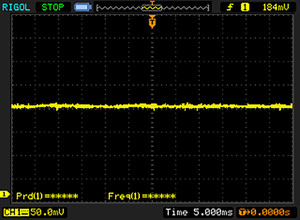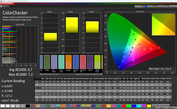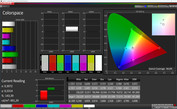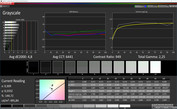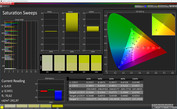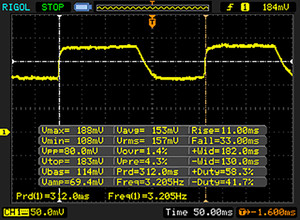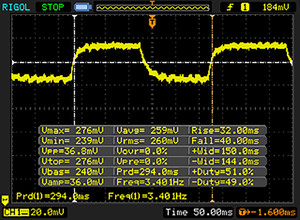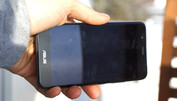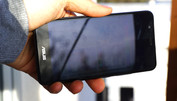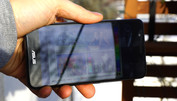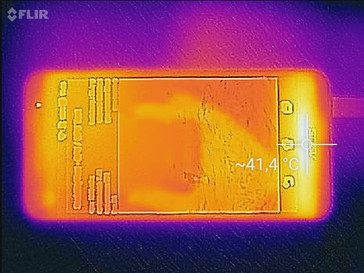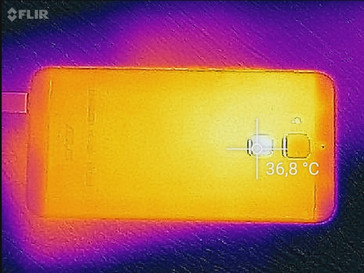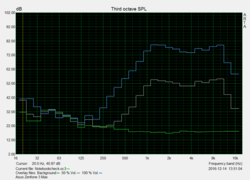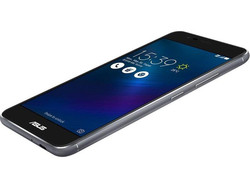Asus ZenFone 3 Max ZC520TL Smartphone Review
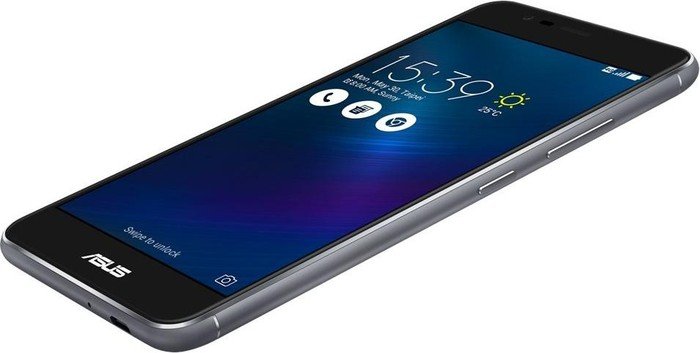
For the original German review, see here.
Even cheap smartphones should now also convey some premium-range feeling. Since this cannot be implemented everywhere for logical reasons, the manufacturers concentrate on individual aspects such as good cameras, high performance or long battery life as in our review sample’s case, Asus' ZenFone 3 Max ZC520TL. It is priced at around 200 Euros (~$210) and has a screen diagonal of 5.2 inches and a 15.6-watt hour battery, which is quite impressive. The former Asus' ZenFone Max was a 5.5-inch handset, which allowed incorporating an even larger battery.
LG has also specialized in affordable devices, each having one outstanding feature in its X series. LG's X Power is the handset with the largest battery here. Samsung's Galaxy J5, Huawei's Y6 II Compact, and Honor's 5C are also in the same price range, but they have a "standard" capacity battery.
Case
Compared with the bulkier predecessor, the ZenFone 3 Max is now much slimmer and at a height of 8.55 millimeters (~0.3 in), no longer stands out from the masses of mid-range smartphones. LG's X Power is even slimmer, even though it is equipped with an equally sized battery. The weight of 148 grams (~5.2 oz) has also been reduced by over 50 grams (~1.8 oz) compared with the predecessor. Even if the ZenFone Max was a 5.5-inch device, the weight loss is impressive.
The casing is metal, and the glass that is lightly curved at the edges covers the front. The design is round and ergonomic, but it does not stand out from other mid-range smartphones. The colors are also traditional: Silver with a white front, dark-gray with a black front or completely gold.
Pressure on the front is seen slightly in the liquid crystals, but the casing is very rigid and cannot be twisted otherwise. The antenna stripes on the rear are lowered into the casing and the resulting edges are obvious but not unpleasant. Transitions can also be felt between the glass and the metal bezel on the front, and they could feel rather rough. Overall, the quality impression is slightly above category standard; only the metal casing distinguishes our review sample from many equally priced devices.
Connectivity
3 GB of RAM and 32 GB of storage capacity are decent and the comparison devices cannot compete with that. They have only 2 GB of RAM and 16 of storage to offer. The huge battery can also be used as a mobile power bank, i.e. friends' devices can be recharged, for example. Data sharing with external storage devices is just possible.
Two SIM cards are supported, but the user will have to choose either a second SIM card or a micro-SD card. An FM radio is also installed.
Software
We performed a system update during our test. However, the Android version remained at 6.0. The security patches are dated August, which is already quite old. Asus has adapted the user interface's appearance with its ZenUI 3.0. The system looks rounder, more colorful and has larger buttons. The modifications are mainly on the surface. The system memory is locked, and Android can only be loaded after entering the correct PIN.
Asus provides animated widgets for the lock screen. The smartphone can be customized with themes and an overlay that enables optimizing the performance or searching for information regarding the game while playing it. Some apps for photo editing are also preloaded. Basically, this could have been omitted since corresponding, mostly free apps can also be found in the Play Store.
Communication and GPS
The ZenFone 3 Max supports LTE Cat.4 and comes with four bands in both the GSM and UMTS networks, as well as seven bands in the LTE network. This is quite impressive since most competitors offer less. However, connecting the smartphone to a network outside of Europe could get difficult. The reception in an urban area via the well-developed Vodafone network was good, and we usually had at least 3/4 of the signal indoors.
The user will have to be satisfied with the 802.11 b/g/n Wi-Fi standards. Consequently, browsing in the 5 GHz network is not possible. Users who have a fast 802.11ac network at home will not be able to utilize it either. Data is transferred at speeds that are normal for an 802.11n device, but more would have also been possible here too.
| Networking | |
| iperf3 transmit AX12 | |
| LG X Power K220 | |
| Asus Zenfone 3 Max ZC520TL | |
| iperf3 receive AX12 | |
| Asus Zenfone 3 Max ZC520TL | |
| LG X Power K220 | |
The GPS/GLONASS module could not track us indoors, but we were located quickly with an accuracy of 3 meters (~10 ft) outdoors.
We take Asus' ZenFone 3 Max alongside Garmin's Edge 500 professional navigation system, developed specifically for cyclists, on a bike ride. The professional device had a bad day in the crossing area; we have seen considerably more accurate route data from the system. The ZenFone recorded our route fairly accurately. Some dropouts occurred while crossing the bridge, but the ZenFone traced our route relatively accurately otherwise. Thus, it can definitely be recommended for non-professional navigating.
Telephone and Call Quality
Asus has redesigned the phone app, but it still functions very much like Google's standard app. The keypad opens when the app is launched, the recently called and incoming phone numbers are displayed at the top. Contacts, favorites, and groups can be accessed via tabs, and numbers can be easily blocked.
The call quality is acceptable. The earpiece transmits the contact's voice quite clearly, but not excessively loud. On the other hand, the microphone's voice transmission is rather tinny. The contact sounded slightly muffled via hands-free mode, and the microphone transmitted even more noise to the contact. Overall, it is possible to make relatively intelligible calls using Asus' ZenFone 3 Max, but its call quality will not win any awards.
Cameras
Asus' ZenFone 3 Max is exactly on category average with a 13-megapixel camera on the rear and 5-megapixels on the front. Nothing has changed compared with the predecessor, at least in terms of megapixel count. It has actually been slimmed down: The laser auto-focus and dual-LED flash found in the predecessor have been omitted here.
We tested the rear-facing camera on an afternoon walk. Since the sun was already setting, the scenario was quite demanding. The primary camera in Asus' ZenFone 3 Max hardly convinces here: Barely any outlines are visible in dark areas, color surfaces look blotchy, and the photo is overall relatively blurry. The camera in Samsung's Galaxy S7 presents its much higher quality here. Hardly any outlines in dark areas are visible in very high-contrast photos, such as our candlelight test shots. At least the flames are not overexposed. The colors, however, look much too cool here.
The rear-facing camera records videos at a maximum of 1080p at 30 frames per second. The quality is good here. The exposure adapts very quickly, and releasing the auto-focus manually, which is also fast, helps when photographing nearby objects. The color reproduction is decent and the image sharpness is good.
The front-facing camera shoots decent photos at a maximum of 5 megapixels. The dynamics could be a bit higher in dark areas and a slight color noise is also visible. However, the front-facing camera is overall satisfactory.
The primary camera in Asus' ZenFone 3 Max produces decent photos that are relatively sharp under defined light conditions in the test lab. The blurred edges of text are noticed on a red background, but then the edges are too sharp on a green background. The photos also look quite dark here.
A look at the color chart also confirms this. Many color tones are too dark and yellow tones are too bright compared to the reference color space.
Accessories and Warranty
In addition to the power supply and USB cable, a USB OTG adapter that, for example, allows connecting another device via USB for charging or connecting an external storage device, is found in the box of Asus' ZenFone 3 Max. A SIM tool for the slot is also included.
Some general accessories for Zenphones are listed on Asus' website, but product-specific accessories are only available for the premium models. The ZenFone 3 Max is unfortunately not one of them.
The warranty period is limited to only 12 months. Please see our Guarantees, Return Policies & Warranties FAQ for country-specific information.
Input Devices and Handling
The ZenUI keyboard developed by Asus is preset. Personally, we like the more basic GBoard by Google with fewer double assignments and larger keys. However, it first has to be downloaded from Google's Play Store. Asus only preloads its proprietary keyboard app. However, it also allows fast typing and offers many input modes.
The fingerprint scanner is situated on the rear. It allows unlocking the smartphone quickly and it can be used for waking up the smartphone from standby. The sensor can also be used for taking pictures, launching the camera or accepting calls.
Asus has also installed a gesture and touch control called ZenMotion. It allows waking up the smartphone via double-tap or launching apps by inputting letters on a turned off smartphone. However, activating it is rather complicated since it is not enough to turn the slider to "on" in the settings menu. The item itself has to be tapped and the individual gestures have to be enabled manually.
The volume control and standby button are readily accessible and their roughened surface make them easy to feel. They have an accurate pressure point.
Display
A 720p-resolution screen is standard in this category, and only Honor's 5C stands out with its Full HD panel here. The screen's average brightness of 474 cd/m² is quite bright, even though the predecessor offered a much higher brightness. The illumination of 85% is not very homogeneous: A difference of over 70 cd/m² is measured between the darkest and the brightest area in maximum brightness. This is visible on large color surfaces when looking closely.
| |||||||||||||||||||||||||
Brightness Distribution: 85 %
Center on Battery: 507 cd/m²
Contrast: 957:1 (Black: 0.53 cd/m²)
ΔE Color 4.7 | 0.5-29.43 Ø5
ΔE Greyscale 4.8 | 0.57-98 Ø5.3
Gamma: 2.25
| Asus Zenfone 3 Max ZC520TL IPS, 1280x720, 5.20 | Asus ZenFone Max ZC550KL IPS, 1280x720, 5.50 | Honor 5C IPS, 1920x1080, 5.20 | Huawei Y6 II Compact IPS, 1280x720, 5.00 | Samsung Galaxy J5 2016 AMOLED, 1280x720, 5.20 | LG X Power K220 IPS, 1280x720, 5.30 | |
|---|---|---|---|---|---|---|
| Screen | -1% | -14% | -28% | -6% | -24% | |
| Brightness middle | 507 | 586 16% | 515 2% | 491 -3% | 289 -43% | 381 -25% |
| Brightness | 474 | 566 19% | 498 5% | 487 3% | 291 -39% | 352 -26% |
| Brightness Distribution | 85 | 84 -1% | 93 9% | 92 8% | 96 13% | 85 0% |
| Black Level * | 0.53 | 0.57 -8% | 0.49 8% | 0.9 -70% | 0.2 62% | |
| Contrast | 957 | 1028 7% | 1051 10% | 546 -43% | 1905 99% | |
| Colorchecker dE 2000 * | 4.7 | 4.2 11% | 6.2 -32% | 6.6 -40% | 4.7 -0% | 7.3 -55% |
| Colorchecker dE 2000 max. * | 7.2 | 8.4 -17% | 11.4 -58% | 12.9 -79% | 7.3 -1% | 21.2 -194% |
| Greyscale dE 2000 * | 4.8 | 6.3 -31% | 7.4 -54% | 4.9 -2% | 3 37% | 7.4 -54% |
| Gamma | 2.25 98% | 2.39 92% | 2.28 96% | 2.12 104% | 2.03 108% | 2.26 97% |
| CCT | 6441 101% | 6614 98% | 8664 75% | 7090 92% | 6291 103% | 8417 77% |
* ... smaller is better
Screen Flickering / PWM (Pulse-Width Modulation)
| Screen flickering / PWM not detected | |||
In comparison: 53 % of all tested devices do not use PWM to dim the display. If PWM was detected, an average of 17900 (minimum: 5 - maximum: 3846000) Hz was measured. | |||
The black level of 0.53 cd/m² is acceptable, but LG's X Power can display much blacker areas with 0.2 cd/m², not to mention the AMOLED panel in Samsung's Galaxy J5. The contrast ratio of 957:1 is rather mediocre. We did not ascertain any image flickering due to pulse width modulation.
The screen's color accuracy is satisfactory when compared with the sRGB reference color space. However, the color space coverage is only just below 85%. A very light greenish tint can be seen in brighter grayscale levels when looking closely. A blue light filter (a warmer white balance) with 5 levels is also present.
Display Response Times
| ↔ Response Time Black to White | ||
|---|---|---|
| 44 ms ... rise ↗ and fall ↘ combined | ↗ 11 ms rise | |
| ↘ 33 ms fall | ||
| The screen shows slow response rates in our tests and will be unsatisfactory for gamers. In comparison, all tested devices range from 0.1 (minimum) to 240 (maximum) ms. » 98 % of all devices are better. This means that the measured response time is worse than the average of all tested devices (21.5 ms). | ||
| ↔ Response Time 50% Grey to 80% Grey | ||
| 72 ms ... rise ↗ and fall ↘ combined | ↗ 32 ms rise | |
| ↘ 40 ms fall | ||
| The screen shows slow response rates in our tests and will be unsatisfactory for gamers. In comparison, all tested devices range from 0.2 (minimum) to 636 (maximum) ms. » 99 % of all devices are better. This means that the measured response time is worse than the average of all tested devices (33.7 ms). | ||
Although the screen is quite bright, it has problems defying reflections in bright surroundings outdoors. The ambient light sensor does a good job, but it is nevertheless difficult to recognize something on the smartphone in bright sunlight.
The viewing angles are good, and the image is clearly visible from all sides. The camera is more sensitive to the slight color shifts than the human eye.
Performance
The SoC in our review sample is MediaTek's MT6737. It is built in the 28-nanometer process and has four CPU cores based on the 64-bit capable Cortex A53 architecture. It clocks at 1.25 GHz. Although it is an entry-level SoC, it always ensured smooth navigation in, for example, Blackview's A8 Max. We cannot say this is always true for Asus' ZenFone 3 Max. Stutters or waiting times occurred time and again. They were not dramatic, but Asus' ZenFone 3 Max did not convey a quite as smooth impression as most competing devices. We assume that this is due to the Asus' modified interface. An update could eliminate this.
The processor part of the SoC is roughly on par with the comparison devices in the benchmarks. Only Honor's 5C with its upper mid-range SoC has a clear lead.
The graphics unit in Asus' ZenFone 3 Max is an ARM Mali-T720 MP2 that clocks at 650 MHz and supports OpenGL ES 3.1, which is a slightly older version. The performance in the benchmarks fluctuates and is usually slightly below that of comparable devices.
| AnTuTu v6 - Total Score (sort by value) | |
| Asus Zenfone 3 Max ZC520TL | |
| Asus ZenFone Max ZC550KL | |
| Honor 5C | |
| Huawei Y6 II Compact | |
| Samsung Galaxy J5 2016 | |
| LG X Power K220 | |
| Geekbench 4.0 | |
| 64 Bit Single-Core Score (sort by value) | |
| Asus Zenfone 3 Max ZC520TL | |
| Huawei Y6 II Compact | |
| LG X Power K220 | |
| 64 Bit Multi-Core Score (sort by value) | |
| Asus Zenfone 3 Max ZC520TL | |
| Huawei Y6 II Compact | |
| LG X Power K220 | |
| GFXBench (DX / GLBenchmark) 2.7 | |
| T-Rex Onscreen (sort by value) | |
| Asus Zenfone 3 Max ZC520TL | |
| Honor 5C | |
| Huawei Y6 II Compact | |
| Samsung Galaxy J5 2016 | |
| LG X Power K220 | |
| 1920x1080 T-Rex Offscreen (sort by value) | |
| Asus Zenfone 3 Max ZC520TL | |
| Asus ZenFone Max ZC550KL | |
| Honor 5C | |
| Huawei Y6 II Compact | |
| Samsung Galaxy J5 2016 | |
| LG X Power K220 | |
| GFXBench 3.0 | |
| on screen Manhattan Onscreen OGL (sort by value) | |
| Asus Zenfone 3 Max ZC520TL | |
| Asus ZenFone Max ZC550KL | |
| Honor 5C | |
| Huawei Y6 II Compact | |
| Samsung Galaxy J5 2016 | |
| LG X Power K220 | |
| 1920x1080 1080p Manhattan Offscreen (sort by value) | |
| Asus Zenfone 3 Max ZC520TL | |
| Asus ZenFone Max ZC550KL | |
| Honor 5C | |
| Huawei Y6 II Compact | |
| Samsung Galaxy J5 2016 | |
| LG X Power K220 | |
| GFXBench 3.1 | |
| on screen Manhattan ES 3.1 Onscreen (sort by value) | |
| Asus Zenfone 3 Max ZC520TL | |
| Honor 5C | |
| Huawei Y6 II Compact | |
| Samsung Galaxy J5 2016 | |
| LG X Power K220 | |
| 1920x1080 Manhattan ES 3.1 Offscreen (sort by value) | |
| Asus Zenfone 3 Max ZC520TL | |
| Honor 5C | |
| Huawei Y6 II Compact | |
| Samsung Galaxy J5 2016 | |
| LG X Power K220 | |
| PCMark for Android - Work performance score (sort by value) | |
| Asus Zenfone 3 Max ZC520TL | |
| Asus ZenFone Max ZC550KL | |
| Honor 5C | |
| Huawei Y6 II Compact | |
| Samsung Galaxy J5 2016 | |
| LG X Power K220 | |
Asus' ZenFone 3 Max lags slightly behind comparable devices in browsing performance. The distance varies depending on the benchmark. We looked at some sophisticated HTML5 websites for testing purposes. One of them stopped loading and the animation in others stuttered. The experience using higher-performance smartphones is considerably better.
The computing power will be enough for occasional checking of emails or reading the news.
| Octane V2 - Total Score (sort by value) | |
| Asus Zenfone 3 Max ZC520TL | |
| Asus ZenFone Max ZC550KL | |
| Honor 5C | |
| Huawei Y6 II Compact | |
| Samsung Galaxy J5 2016 | |
| LG X Power K220 | |
| Mozilla Kraken 1.1 - Total (sort by value) | |
| Asus Zenfone 3 Max ZC520TL | |
| Asus ZenFone Max ZC550KL | |
| Honor 5C | |
| Huawei Y6 II Compact | |
| Samsung Galaxy J5 2016 | |
| LG X Power K220 | |
| WebXPRT 2015 - Overall (sort by value) | |
| Asus Zenfone 3 Max ZC520TL | |
| Honor 5C | |
| Huawei Y6 II Compact | |
| Samsung Galaxy J5 2016 | |
| JetStream 1.1 - Total Score (sort by value) | |
| Asus Zenfone 3 Max ZC520TL | |
| Asus ZenFone Max ZC550KL | |
| Honor 5C | |
| Huawei Y6 II Compact | |
| Samsung Galaxy J5 2016 | |
| LG X Power K220 | |
* ... smaller is better
The ZenFone 3 Max did a good job in accessing the Toshiba Exceria Pro M401 reference memory card, but did not come close to the very fast access rates of Samsung's Galaxy J5. The micro-SD card can be formatted as an internal storage. However, we did not discover a possibility of moving apps to the SD card when it is used as a memory card.
The review sample is midfield in terms of accessing the internal storage.
| Asus Zenfone 3 Max ZC520TL | Asus ZenFone Max ZC550KL | Honor 5C | Huawei Y6 II Compact | Samsung Galaxy J5 2016 | LG X Power K220 | |
|---|---|---|---|---|---|---|
| AndroBench 3-5 | -41% | 54% | 7% | 24% | -20% | |
| Sequential Read 256KB | 174.2 | 130.6 -25% | 263 51% | 211 21% | 147 -16% | 196.8 13% |
| Sequential Write 256KB | 65.2 | 31.1 -52% | 75.5 16% | 75 15% | 72 10% | 43.74 -33% |
| Random Read 4KB | 20.9 | 9.1 -56% | 61.7 195% | 23 10% | 21 0% | 18.78 -10% |
| Random Write 4KB | 9.1 | 3.6 -60% | 15.7 73% | 15.5 70% | 11.6 27% | 7.32 -20% |
| Sequential Read 256KB SDCard | 47.67 | 38.43 -19% | 51.9 9% | 31.57 -34% | 79.8 67% | 32.08 -33% |
| Sequential Write 256KB SDCard | 29.59 | 18.93 -36% | 24.21 -18% | 17.12 -42% | 46.61 58% | 18.17 -39% |
Games
The graphics unit cannot render games such as "Asphalt 8" smoothly even in low details. Visible stutters are seen in high details. This might also be due to the fact that Asus fades in an overlay during the game, which probably also draws on performance (small gamepad in the upper left of the screenshots).
More basic games, such as "Angry Birds" can be played on the smartphone without any issues. Users who play 3D-games with high graphics requirements will have to opt for a higher-performance smartphone.
Control via touchscreen and position sensor was very accurate in all games in our tests.
| Asphalt 8: Airborne | |||
| Settings | Value | ||
| high | 15 fps | ||
| very low | 28 fps | ||
| Dead Trigger 2 | |||
| Settings | Value | ||
| high | 27 fps | ||
Emissions
Temperature
A slight temperature increase is noticed during load with a maximum temperature of 40.4 °C (~105 °F), but it is not unpleasant and it is also very much limited to one area. The idle load temperature is hardly felt.
We check whether the system can maintain its performance with the GFXBench battery test. We can give a positive report - the frame rates fluctuate only slightly and are on roughly the same level as at the beginning after thirty runs.
(±) The maximum temperature on the upper side is 40.4 °C / 105 F, compared to the average of 35 °C / 95 F, ranging from 21.9 to 56 °C for the class Smartphone.
(+) The bottom heats up to a maximum of 35.5 °C / 96 F, compared to the average of 33.8 °C / 93 F
(+) In idle usage, the average temperature for the upper side is 28.7 °C / 84 F, compared to the device average of 32.7 °C / 91 F.
Speaker
The speaker in Asus' ZenFone 3 Max is situated on the rear and muffles audibly when the smartphone is placed on a table. In fact, not much sound is heard at all. The sound can be adapted in several preset profiles via the audio assistant. Furthermore, a button for an outdoor mode appears when changing the volume via the volume control. It increases the high tones and supposedly increases intelligibility in the outdoors.
This does not contribute to the speaker's already relatively thin and treble-heavy sound. At least the other profiles provide a somewhat more balanced sound. Smart mode selects the suitable profile automatically. Overall, the sound is not very convincing. Although it is fairly loud, it does not present audible basses and is very treble-heavy.
The 3.5-mm jack and Bluetooth provide a balanced audio signal.
Asus Zenfone 3 Max ZC520TL audio analysis
(+) | speakers can play relatively loud (88 dB)
Bass 100 - 315 Hz
(-) | nearly no bass - on average 37.7% lower than median
(±) | linearity of bass is average (9.6% delta to prev. frequency)
Mids 400 - 2000 Hz
(±) | reduced mids - on average 9.7% lower than median
(±) | linearity of mids is average (9.4% delta to prev. frequency)
Highs 2 - 16 kHz
(±) | higher highs - on average 7.6% higher than median
(+) | highs are linear (3.3% delta to prev. frequency)
Overall 100 - 16.000 Hz
(-) | overall sound is not linear (30.7% difference to median)
Compared to same class
» 76% of all tested devices in this class were better, 4% similar, 20% worse
» The best had a delta of 12%, average was 38%, worst was 134%
Compared to all devices tested
» 87% of all tested devices were better, 3% similar, 10% worse
» The best had a delta of 4%, average was 25%, worst was 134%
LG X Power K220 audio analysis
(+) | speakers can play relatively loud (88.5 dB)
Bass 100 - 315 Hz
(-) | nearly no bass - on average 41.7% lower than median
(±) | linearity of bass is average (8.7% delta to prev. frequency)
Mids 400 - 2000 Hz
(±) | reduced mids - on average 9% lower than median
(±) | linearity of mids is average (10.7% delta to prev. frequency)
Highs 2 - 16 kHz
(±) | higher highs - on average 5.4% higher than median
(+) | highs are linear (4.6% delta to prev. frequency)
Overall 100 - 16.000 Hz
(±) | linearity of overall sound is average (29% difference to median)
Compared to same class
» 72% of all tested devices in this class were better, 4% similar, 24% worse
» The best had a delta of 12%, average was 38%, worst was 134%
Compared to all devices tested
» 85% of all tested devices were better, 3% similar, 13% worse
» The best had a delta of 4%, average was 25%, worst was 134%
Samsung Galaxy J5 2016 audio analysis
(+) | speakers can play relatively loud (84.1 dB)
Bass 100 - 315 Hz
(-) | nearly no bass - on average 32.6% lower than median
(±) | linearity of bass is average (7.1% delta to prev. frequency)
Mids 400 - 2000 Hz
(±) | higher mids - on average 7.6% higher than median
(±) | linearity of mids is average (10.9% delta to prev. frequency)
Highs 2 - 16 kHz
(±) | higher highs - on average 6.1% higher than median
(+) | highs are linear (6.5% delta to prev. frequency)
Overall 100 - 16.000 Hz
(-) | overall sound is not linear (30.2% difference to median)
Compared to same class
» 75% of all tested devices in this class were better, 4% similar, 21% worse
» The best had a delta of 12%, average was 38%, worst was 134%
Compared to all devices tested
» 86% of all tested devices were better, 3% similar, 11% worse
» The best had a delta of 4%, average was 25%, worst was 134%
Frequency diagram in comparison (checkboxes above can be turned on/off!)
Energy Management
Power Consumption
The power consumption is relatively high and only its minimum idle consumption can match that of other devices. However, Asus' ZenFone 3 Max already consumes more power than the comparison devices during light load. As much as 6.59 watts can be reached during maximum load. Samsung's Galaxy J5 does not need half as much here.
| Off / Standby | |
| Idle | |
| Load |
|
| Asus Zenfone 3 Max ZC520TL 4100 mAh | Asus ZenFone Max ZC550KL 5000 mAh | Honor 5C 3000 mAh | Huawei Y6 II Compact 2200 mAh | Samsung Galaxy J5 2016 3100 mAh | LG X Power K220 4100 mAh | |
|---|---|---|---|---|---|---|
| Power Consumption | -9% | 8% | 28% | 38% | 28% | |
| Idle Minimum * | 0.74 | 1.15 -55% | 0.89 -20% | 0.57 23% | 0.61 18% | 0.64 14% |
| Idle Average * | 2.04 | 2.09 -2% | 2.07 -1% | 1.53 25% | 1.41 31% | 1.3 36% |
| Idle Maximum * | 2.22 | 2.17 2% | 2.15 3% | 1.6 28% | 1.51 32% | 1.34 40% |
| Load Average * | 5.57 | 5.38 3% | 3.46 38% | 2.82 49% | 2.56 54% | 4.18 25% |
| Load Maximum * | 6.59 | 6.08 8% | 5.18 21% | 5.69 14% | 3.1 53% | 4.87 26% |
* ... smaller is better
Battery Runtime
Thus, the good battery life is mainly due to the high-capacity battery. The battery can provide 4100 mAh or 15.6-watt hours. This allows our review sample to last 13:34 hours in the Wi-Fi test. LG's X Power with an equally sized battery, however, achieves 16:27 hours thanks to its considerably lower consumption.
Nevertheless, the runtime of Asus' ZenFone 3 Max is impressive and is easily enough for two workdays when games are not played. When the smartphone is not used frequently, it might have to be reconnected to an outlet after four days. Super savings mode extends the battery life when it gets tight. Asus' ZenFone 3 Max does not support a Quick Charge feature.
| Asus Zenfone 3 Max ZC520TL 4100 mAh | Asus ZenFone Max ZC550KL 5000 mAh | Honor 5C 3000 mAh | Huawei Y6 II Compact 2200 mAh | Samsung Galaxy J5 2016 3100 mAh | LG X Power K220 4100 mAh | |
|---|---|---|---|---|---|---|
| Battery Runtime | 18% | -34% | -22% | 0% | 21% | |
| Reader / Idle | 1462 | 997 -32% | 1175 -20% | 1599 9% | ||
| H.264 | 845 | 602 -29% | 682 -19% | 658 -22% | ||
| WiFi v1.3 | 814 | 959 18% | 584 -28% | 623 -23% | 643 -21% | 987 21% |
| Load | 301 | 156 -48% | 222 -26% | 402 34% | 365 21% |
Pros
Cons
Verdict
Asus' ZenFone 3 Max keeps its most important promise: Its battery life is really extremely long. As pleasing as this is, we have to say that LG's X Power even surpasses this runtime. We like the review sample's casing; it is very high-quality for this price range, but it does not stand out from the masses of smartphones. More positive qualities are found in the decent screen, low idle power consumption and low temperature development.
We did not like the performance as much. The device is rather slower than its competitors in all aspects. Perhaps this is due to Asus' ZenUI interface? The device is only conditionally suitable for 3D games, but more sophisticated websites could also be a problem.
The ZenFone 3 Max offers a good memory configuration for this price range, can handle two SIM cards, and is light and slim. The handset will be a good deal for anyone mainly focusing on battery life.
Compared with its direct predecessor, the ZenFone Max, our review sample does many things better, but it has lost some of its runtime. Asus' ZenFone 3 Max is a successful update and seen on its own, it is primarily suitable for runtime-junkies. Everyone else will have to make compromises in camera, speaker, and call quality. But this is not unusual in this price range.
Asus Zenfone 3 Max ZC520TL
-
01/02/2017 v6(old)
Florian Wimmer


 Deutsch
Deutsch English
English Español
Español Français
Français Italiano
Italiano Nederlands
Nederlands Polski
Polski Português
Português Русский
Русский Türkçe
Türkçe Svenska
Svenska Chinese
Chinese Magyar
Magyar